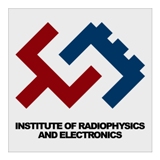Semicondustor Nanoelectronics
Scientific Staff
Publications
Semiconductor Nanoelectronics Laboratory ) at IRPhE performs Thin Film and Nanowire Based Solar Cells research. Laboratory incorporates theoretical and experimental research. Cleanroom facilities are available at laboratory. The focus of the research is the creating of advanced materials and development of novel device structures for photovoltaic applications.
Solar Cells Research includes:
- Developing and improving photovoltaic (PV) cells in different material systems
- Characterizing PV cells, modules, and systems to improve performance and reliability
- Nanowires, nanospheres and their photovoltaic applications
-
Thin film technologies:
p-InSb- n-CdTe heterostuctures
CH3NH3PbI3-x Clx perovskite thin films
-
Compact modeling of modern CMOS devices, multi-gate MOSFETs particularly NW gate-all-around FETs and FinFETs.
These topics are described below:
For the first time, thin-film CIGS solar cells have been fabricated on specially developed non-conducting perlite (an aluminum potassium sodium silicate natural mineral of volcanic origin) glass-ceramic substrates to develop a fully integrated photovoltaic and building element. Such glass-ceramic material can meet the physical requirements to solar cells substrates as well as the cost goals. The preliminary data show that CIGS solar cells deposited on ceramic substrates can exhibit efficiency higher than 10%.
The photoelectric characterization of semiconductor nanowires is another aspect of our interests. Among other nanostructures, semiconductor nanowires (NW) offer exciting possibilities as building blocks for different photovoltaic devices, in particular as photosensitive elements in highly integrated optoelectronic devices and for third generation of solar cells. The photoelectric characteristics of NWs are a result of a complicated interplay between radius, doping level, density of surface traps and ionization energy. The phenomenological model developed in our Laboratory explains the dark conductivity and dynamics of photoconductivity transients in semiconductor NWs.
Modern advances in nanotechnology allow incorporating several material layers with the same or different type of conductivity into a single nanowire (nanorod). The array of NWs in which each wire has a p-n- junction in the radial direction may provide an interesting application in the third generation solar cells technology. The advantage of such solar cells is that the directions of light absorption and carrier collection can be orthogonal, which allows to provide efficient carrier separation in the radial direction for the optically thick NW arrays, even when the minority carrier diffusion lengths are shorter than the optical absorption length. We perform the theoretical analyses of the main peculiarities of coaxial core/shell nanowire structures with built-in radial p-n-junctions and the developed model is a good base for further studies of photovoltaic applications.
In the past SSPhL research was concerned with crystal lattice defects and their influence on mechanical and electrical characteristics.
- Twinning of LiNbO3 crystal was investigated under uniaxial loading at a rate 5 to 50 m m /min in the temperature interval 20 to 850 C.
- Stress-strain characteristics of Pb0.95 Sn0.05 Se single crystals grown from the vapour phase have been investigated experimentally in the plastic deformation range and found to possess a power law, while the temperature dependence had a thermally activated character.
- For the partially reduced and oxidized LiNbO3 :Fe crystals, spectral characteristics of the optical absorption coefficient , photoconductivity and photogalvanic current have been investigated in the 290-473 K temperature interval and 2-4 eV energy range.
Laser radiation effect on superconductors was investigated as well. Phase transition temperature as a function of laser intensity was obtained. Existence of collective modes in superconductors having sound spectrum was first predicted. The obtained modes are related with phase oscillation of order parameter.

